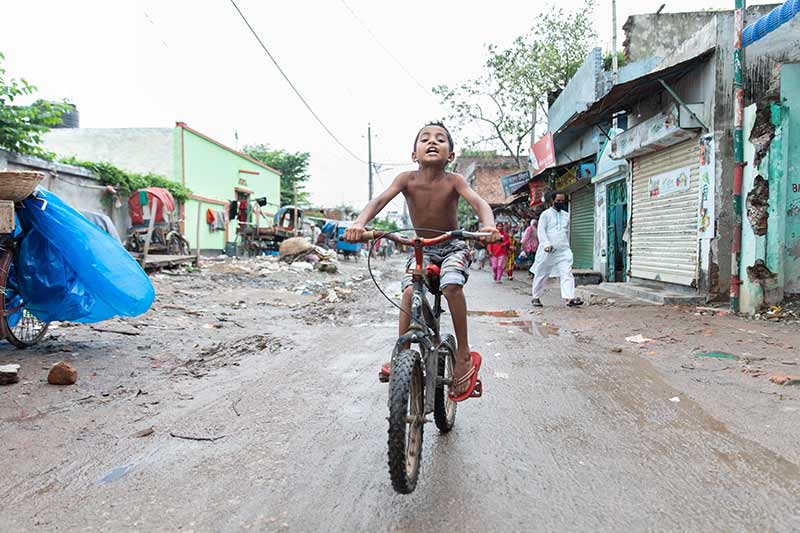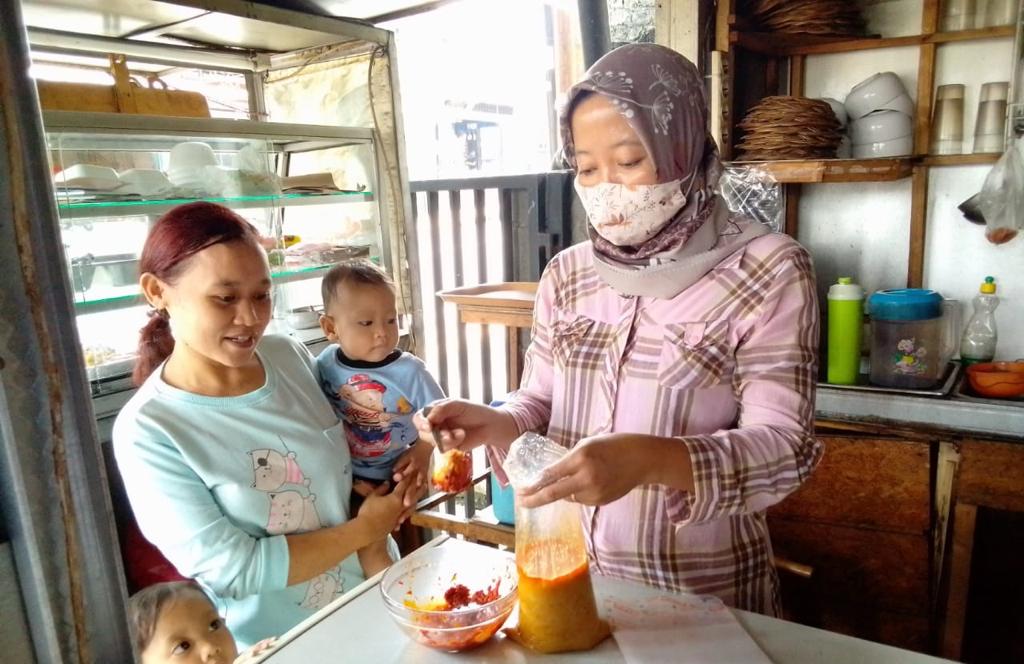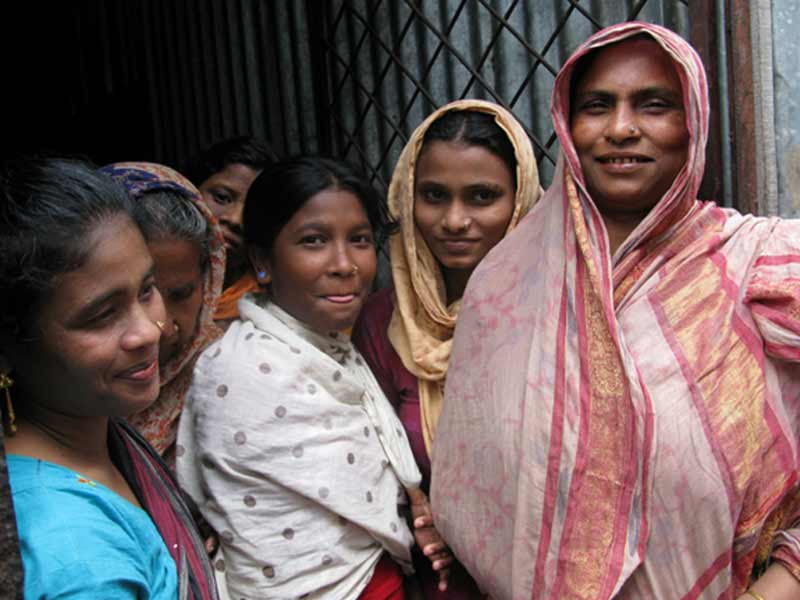
Investing in Food Security: how data drives change
Every year, governments in low- and middle-income countries spend nearly $200 billion (USD) on agriculture to address food insecurity, more than they spend on education and infrastructure put together. Yet, more than 800 million people around the world face chronic food deprivation every single day, many of them in developing countries, while over 3 billion are malnourished. In Asia, for example, where economic growth has stunned observers, nearly a 25% of the rapidly growing urban population is food insecure.
Worldwide, there has been a distressing failure to make progress towards the Sustainable Development Goals (SDGs) laid out by the United Nations, most specifically, SDG 2.1 of ensuring access to safe, nutritious food for all, and SDG 2.2 of eradicating all forms of malnutrition. In fact, we are not only failing, we are moving in the opposite direction. In 2020, over 450 million more people faced food insecurity than in 2019.
It is a crisis of global proportions, and with the escalation of extreme weather events related to climate change which interrupt and devastate food production, it is a crisis which is set to worsen. How, with so much investment, so much focus and goodwill, have attempts to address food insecurity been such a catastrophe?
The answer is surprisingly simple – bad data.
As governments and organizations invest in food security, the data which backs this spending is inaccurate, outdated, or non-existent. This leaves policy makers and international organizations “flying blind” in attempts to develop evidence-based food security initiatives, and measure the results of such initiatives. This not only leads to failure, but to unintended negative consequences – losses in productivity and income, environmental degradation, and the perpetuation of hunger and malnutrition.
Governments and organizations are spending money, but bad data means they are often throwing it away. So what can be done?
Innovation and better data
As the UN put it when it announced the Sustainable Development Goals in 2015: “Quality, accessible, timely and reliable disaggregated data will be needed to help with the measurement of progress and to ensure that no one is left behind. Such data is key to decision making.” In other words, better food systems data is urgently needed in order to effectively allocate resources and respond to the crisis of food insecurity.
In this, there is good news. In recent years, technological innovation has begun to change the way data is collected, shared, and used. It is making data collection less expensive, faster, and more precise, and allowing for collaboration between diverse food system stakeholders, ensuring that the data produced is precisely what’s needed.
New technology includes earth observations from satellites and extreme weather sensor networks; it includes scientific data for soil composition and water quality; it includes big data on trends and the impacts of initiatives; it includes digital solutions which connect people all over the world.
Truly, tech innovations are changing the game when it comes to data. However, it must be mentioned that as revolutionary as new, technology-driven data is, it cannot completely replace traditional data sources. Things like household surveys and farm censuses are still important, and can be used in conjunction with new data sources to verify and strengthen both.
These traditional data methods can themselves be updated through innovation, such as by producing surveys and censuses remotely. This allows the same vital data which has been collected for generations to be compiled more precisely and in less time.
Together, new and old, good data is the crucial foundation for food systems transformation, and without it, problem-solvers are “flying blind.”
The crisis of underinvestment
Given its obvious importance, it might be asked why food systems data is so inadequate. The answer, on a most basic level, is underinvestment.
As the Global Partnership for Sustainable Development Data put it, “lack of investment in national foundational data and statistics systems is the biggest challenge countries are facing” when attempting to address food insecurity. In fact, it has been estimated that official development assistance for data will need to “at least double” to finance adequate national data systems moving forward.
This lack of investment shows up tangibly through a troubling deficiency in vital data. For example, data on small farm holders is a key indicator for the Sustainable Development Goals, yet such data is only available for income in 38 countries worldwide, and for productivity in only 11 countries. How are the SDGs to be pursued if they cannot be measured? Worse still, only 10% of countries globally have the capacity to produce sufficiently disaggregated food systems data for different population groups.
Investment in data is urgently needed
It is easy to say that governments and organizations must immediately scale up the production and utilization of effective food systems data. Indeed, they should devote funding to the development of national data systems, statistical capacity, and digital skills. To promote policies and devote funding without the backing of data, as governments and organizations are currently attempting, is to put the cart before the horse.
Yet, it is not quite so simple as just saying it. Important as it may be, many low- and middle-income countries struggle to mobilize resources for the production of good data. Where national and local funds are lacking, they must rely on a mix of investments from big donors and international organizations.
To understand the complexity of this process, examine the case study below.
Case Study: Pacific Small Island Developing States (SIDS)
Pacific SIDS have a high dependency on external aid to finance development projects, including the production of necessary data. While some large external donors and development partners exist, much of this aid comes from a multitude of smaller, often uncoordinated entities. This lack of coordination can stretch countries’ administrative capacities and reduce effectiveness when funds are obtained.
Ominously, this external aid has represented a decreasing proportion of overall financial resources available for sustainable development over the past two decades, nearly being cut in half. As a result, some Pacific SIDS, such as Fiji and Tuvalu, have turned to climate finance, which is on the rise worldwide, leveraging such finance towards food security and into green food systems solutions.
But as Pacific SIDS seek out external aid, they face “a complex web of eligibilities and various applications requirements” that can be difficult to fulfill. Some require co-financing which countries cannot provide, others involve technical and administrative capabilities that countries don’t have. This often means that before countries can even apply for external aid, they must find external partners to help them with the application.
At all stages of the process, investment is complicated and difficult to obtain, and relies largely on external actors.
The problem with an overreliance on external funding is that it ties initiatives to the objectives and priorities of donors, which may or may not align with the priorities of the countries. In many cases, donors prioritize splashy, short-term projects, rather than long-term strategic objectives and institutional development, meaning that data production is often set aside or ignored.
Stakeholder collaboration is the key to good data
As well intentioned as donors may be, the fact is, “data is useless when it does not speak to local priorities or meet the needs of domestic policy makers.” As such, collaboration between stakeholders holds the key to the production of useful, targeted data for food systems. Put simply by the Global Partnership for Sustainable Development Data: “When stakeholders along the data value chain collaborate, the result is more and better data produced, more relevant and timely insights for decision-makers, and better use of the available resources.”
Significantly, this does only mean collaboration between governments, donors, and NGOs. It must be inclusive at all levels, including in considering the experiences of small farm holders and the most vulnerable, those most affected by failures brought on by bad data.
Without this collaboration, data can actually have negative impacts on food security initiatives, undermining strategies with misleading information, producing unsustainable and ineffective programs, and wasting finite funds. A lack of collaboration on data, right alongside a lack of investment, has created many of the food insecurity problems facing the world today.
Now is the time for data transformation
The results of bad food systems data, like dirty laundry aired, are out in the open for everyone to see – rising food insecurity, hundreds of millions hungry, billions malnourished, a crisis unrestrained.
Yet, the solution is also there to see, indeed, to be had – better data through investment and collaboration, allowing for more effective and timely food security initiatives.
To imagine how this might look in the short term, look only at how health systems data suddenly became paramount during the COVID pandemic. As it did, huge investments were made in data capacity building by governments and donors, totally changing the system almost worldwide in only a few months.
Food insecurity is every bit the crisis that COVID was, and more. When it comes to fighting food insecurity, it is data which must drive change.



